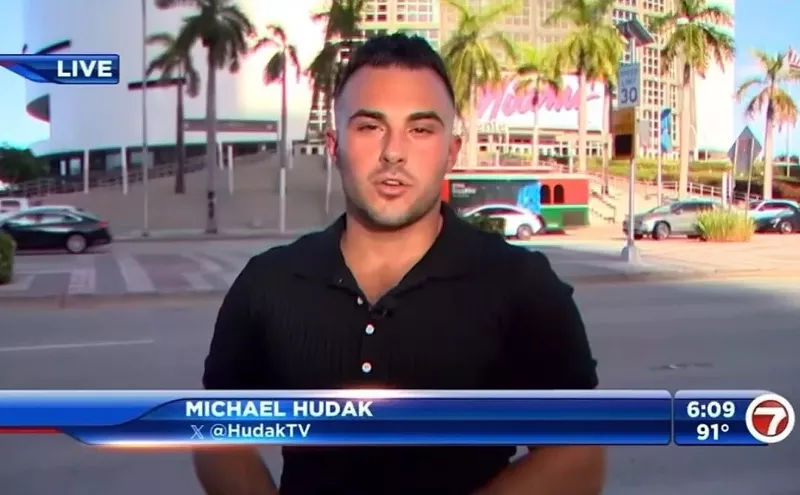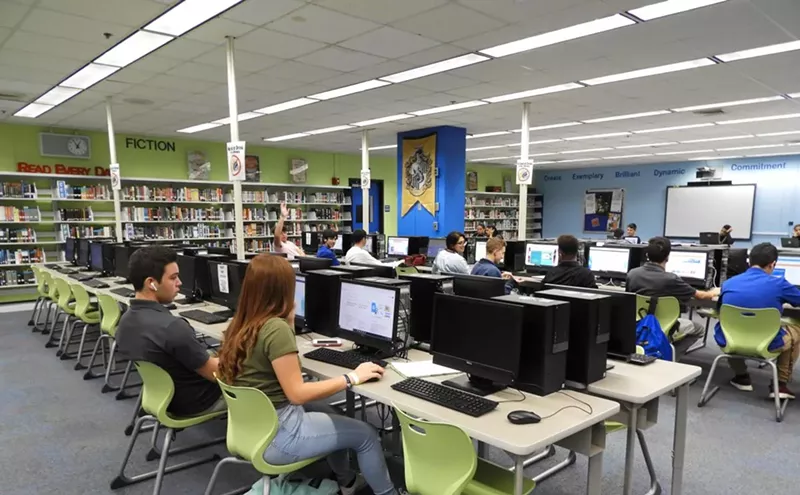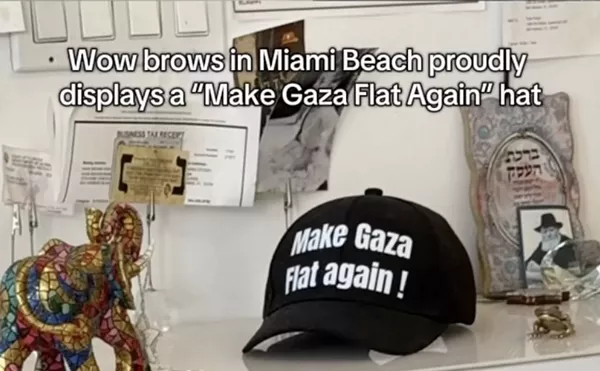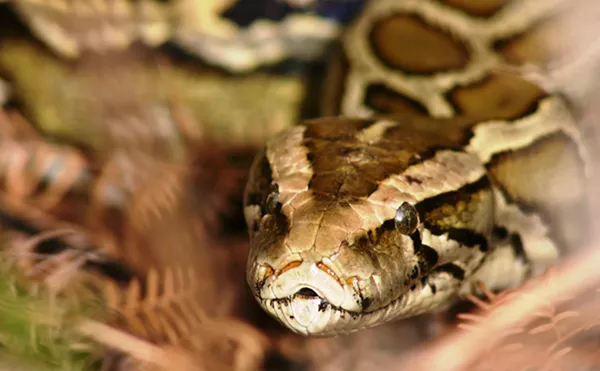Shortly before 10:00 p.m., Diaz stood up. He approached two patrons sitting at the bar in the front of the lounge, brandished a gun equipped with a silencer, and demanded they hit the floor. He fired once to prove his point, pegging a light fixture over the stage.
Wielding a second gun, Toro mounted the stage and demanded every wallet, watch, and piece of jewelry in the room. The three men herded their victims into the men's bathroom and slammed the door shut. Bartenders and patrons listened as their assailants dragged something heavy across the floor — a cigarette machine it turned out — and shoved it against the door. They heard arguing and then gunshots.
Hidden beneath the bar, trembling, a dancer heard them too. Before leaving, the robbers noticed her. They demanded she open the cash register. It jammed. The thieves, seemingly panicked, fled.
Hearing silence, the bathroom hostages broke out. The shaken dancer breathed a sigh of relief. Their valuables, along with cash from the bar and one register, were gone. And in his office, Joseph Nagy, manager of the Velvet Swing, had been shot dead.
A short news brief in the Miami Herald the following day mentioned Nagy's killing. But the police could garner almost nothing to share with the press. The lounge was dark and the assailants unknown. The men spoke in Spanish. The two victims first approached by Diaz could describe him only as slight of build, with Latin features. Frustrated detectives took fingerprints and collected casings from three different caliber weapons. They found a fourth, unfired gun in the office and a fragment of steel wool from a silencer. But the crime would remain unsolved for nearly four years — just another murder during Miami's most violent era.
On Wednesday, December 13, Angel Diaz is scheduled to die for his role in the Velvet Swing killing, one that nobody but the criminals witnessed. Barring a legal miracle, he will be the fourth person executed in Florida this year, the most since 2000. Diaz has been appealing his sentence for twenty years. Although it's not surprising that a man known for sneaking out of prisons would argue against his conviction to the last breath, Diaz's trial was a mess. That has left some people feeling uncertain — not about whether he's a murderer but about the sentence, and whether the process was just.
Born in Puerto Rico in 1951, Angel Diaz married while still in high school and dropped out during his third year. At age 17, he was arrested for heroin possession. At age 24, he shot and wounded a police officer during an armed robbery and was sentenced to five to eight years in prison. While incarcerated, Diaz participated in a drug rehabilitation program. In 1978 he fatally stabbed the program's director nineteen times and was convicted of his murder. Only a year into his fifteen-year sentence, he beat a corrections officer to near death, escaped prison, and fled to Miami. Two months later, he drew his gun in the Velvet Swing.
In February 1981, Miami cops nabbed Diaz for unrelated assault and firearms charges. He gave them an assumed name, Emilio Baez, and posted bond. Before police grasped his real identity — fugitive murderer from Puerto Rico — he jumped bail and fled north. Federal firearms agents caught up with him in Middletown, Connecticut, and arrested him on a warrant for illegal possession of a .25-caliber pistol. The feds soon discovered his history and indicted him on weapons charges in a circuit court in Hartford.
One week later, Diaz again escaped from jail.
In the Hartford Courant, authorities called it "the largest jailbreak in recent state history." Diaz and three inmates assaulted two guards and then used a floor buffer to break a window. Scaling a wall and a twelve-foot fence, they stole two cars and fled the scene. Caught three days later at the Home and Travel Motor Hotel in Meriden, Connecticut, Diaz spent just two years in jail before getting into trouble again. In July 1983 guards found a loaded .38-caliber Derringer under a mattress in his cell. This time they took him to Leavenworth.
Back in Miami, the newly formed Cold Case Squad of the Miami-Dade Police was on the verge of solving the mystery of the Velvet Swing murder. A single fingerprint on a matchbook connected Diaz to the scene. There was also a bar patron's statement that a photo of Diaz "could fit the description of the person who robbed me."
In January 1984 Toro and Diaz were indicted for first-degree murder, robbery, armed kidnapping, and gun violations. "It was cold-blooded," Det. Greg Smith told the Herald's Edna Buchanan at the time. "They sat in the bar for a while and then they started shooting."
Miami-Dade detectives found Sammy Toro in a Wisconsin prison, serving a life sentence for murdering a nineteen-year-old woman during a Boston hotel stickup. Toro accepted a plea bargain for admitting his guilt in the Nagy killing. He was given a second life sentence.
Diaz's trial began December 17, 1985. Before then, while incarcerated in Miami-Dade, he planned yet another escape, teaming up with other inmates to pay a corrupt corrections officer $10,000 for a MAC-10 machine gun. A cellmate, Ralph Gajus, foiled the plot by telling authorities. Gajus also shared details about the murder at the Velvet Swing, saying that Diaz had confessed to the killing. Gajus became a key witness for the prosecution.
The trial was a fiasco. Immediately after the jury was sworn in, prior to opening statements, Diaz fired his attorney and asked to represent himself. "The defense that we have spent countless hours developing over the last couple of months has now over the last 24 hours been rejected by my client," argued an exasperated Lamons, who requested the case be delayed so Diaz could undergo psychiatric evaluation.
Judge Amy Steele Donner declared Diaz fit for self-representation even though she established he would have to rely on an interpreter, had "no idea" how a trial was conducted, lacked a high school diploma, and had read only part of the U.S. Constitution. "This is going to be a nightmare," said prosecuting attorney John Kastrenakis.
Candy Braun, Diaz's erstwhile girlfriend, testified that Toro, not her boyfriend, pulled the trigger. On the witness stand she recalled the conversation in their apartment the night of the robbery. "If they weren't arguing, I probably wouldn't have heard it," court transcripts record her as saying. Braun remembered that she walked into the room, where Toro was recounting the night. "He said words like disparan, tipo panikiado [sic]. Disparan is shot, shoot. Tipo is another word for person, for a guy. Panicado is panic. When he said that, [Diaz] said to him, yelling mad, that that wasn't necessary." When questioned about what unnecessary thing Toro had done, she answered, "Apparently he shot somebody."
Braun admitted that Diaz gave her a wallet full of cash after the event. She took it unquestioningly.
Braun's testimony contrasted with that of Gajus, who alleged Diaz killed Joseph Nagy. Although they did not speak the same language, Gajus claimed Diaz had relayed his guilt in the matter via hand gestures. When asked in court testimony if Diaz verbally confessed, Gajus answered, "No, he did not."
Diaz was convicted of first-degree murder and sentenced to death. "His criminal background played a huge part in him getting sentenced to death," recalled Detective Smith, who has investigated homicides committed by five inmates now on death row. Smith, who is now retired, believes the sentence is fair. "I have a Catholic upbringing, but I've had to deal with it."
Helen Hauser, the attorney who led Diaz's failed appeal to overturn the conviction in 1987, says she still doesn't believe Diaz received a fair trial. "I thought it was wrong to permit him to represent himself. Even if he was sophisticated enough to object to a question, he wouldn't have had time because of the translation delay."
In addition, Diaz was considered a flight risk and was shackled in court. The judge sat behind bulletproof glass. Hauser believes these security measures influenced the jury. "I don't know whether he was guilty or not," she said in a recent phone interview. "I couldn't decide. But he did not get a fair trial."
Since that appeal, Diaz has made more than fifteen attempts to overturn his death sentence. The latest was based on the introduction of new evidence: Twenty years after the fact, Gajus admitted he had no idea if Diaz actually insinuated, with hand gestures, he had killed Nagy. He claims he was simply angry with Diaz for leaving him out of the escape plan.
On Friday, December 8, the Florida Supreme Court decided this new evidence did not warrant a re-evaluation of the death sentence, and Diaz is scheduled to die by lethal injection the evening of December 13. His current lawyer, Suzanne Myers Keffer, is still filing appeals to commute the sentence, including one that claims lethal injection is cruel and unusual punishment.
As for who really killed Joseph Nagy, the secret will likely follow Angel Diaz to the grave. The third assailant at the Velvet Swing committed suicide shortly after the murder. Toro and Diaz each claim the other was the triggerman. "The only two people that know who the shooter was are pointing their fingers at each other," said Detective Smith. "I think they both deserve to get the switch."












